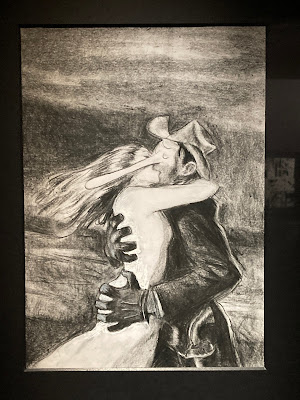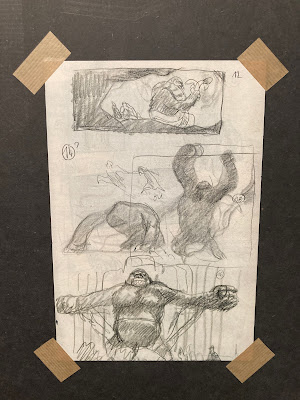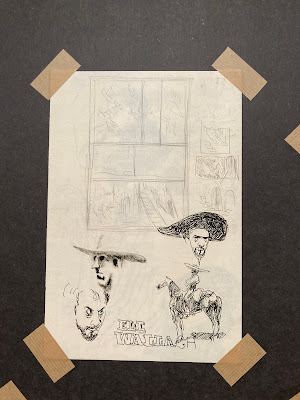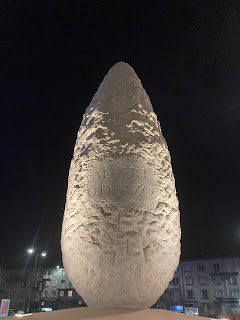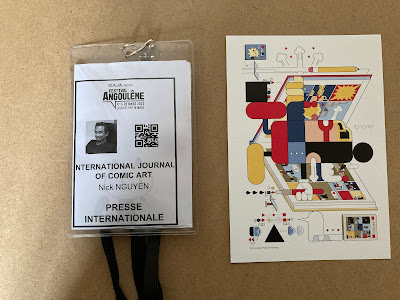Editor's Notes
John A. Lent
Censorship and the Academic Community
Throughout my long run of interviewing cartoonists on every continent (except Antarctica, of course), I have heard of all types of efforts to muffle cartoonists, the punishments they are given, and their means of coping. I have heard other sad tales while serving as a board member of Cartoonists Rights Network International, almost from its beginning.
The plight of the cartoonists, especially political ones, has worsened in recent years with an escalation of authoritarianism, more two-faced democracies, "guided cartooning" (my term), Trumpism, political correctness gone awry, cancel culture, religious extremism, and a couple of cases where "freedom to cartoon" was irresponsibly used without regard for the serious consequences.
Let me bring to light a couple recent examples of censorship relating to books about cartooning. In late 2020, some Ohio legislators called for Kent State University to deny use in their curriculum of Susan Napier's academic book, Anime from Akira to Howl's Moving Castle: Experiencing Contemporary Japanese Animation. One state legislator, calling the book "way beyond pornography," threatened to take away funding from Kent State over it. The controversy began when a 17-year-old boy, not yet a college student, took a Kent State writing class that required reading Napier's book. His parents had already signed a permission form (a ridiculous act itself), that he could read the book, but then the boy complained to his father that the chapter on pornography disturbed him. The father then filed a complaint with a legislator who ran with it. Even though a few legislators became involved, nothing seriously affecting free expression and academic freedom resulted (see, Davidson, 2020, for an interview with Napier).
Ironically, the other book recently censored is about the "struggle against censorship." Written/drawn by Cherian George and Sonny Liew, Red Lines: Political Cartoons and the Struggle against Censorship was banned from being sold or distributed in Singapore by that city state's Infocomm Media Development Authority (IMDA) on November 1, not long after its August release. IMDA found the book to be objectionable under the Undesirable Publications Act, because, according to the Authority, it contained "offensive images that denigrate religions, including reproductions of Charlie Hebdo's cartoons of Prophet Muhammad, which led to protests and violence overseas." Twenty-nine images were judged objectionable; publication and distribution may be allowed if the images are withdrawn, according to authorities.
To my surprise, no mention has been made thus far about the rather full accounts of the hindrances to the "freedom to cartoon" in Singapore. In "Cherian's Story" (pp. 118-128), George tells about his years as art and photo editor of Straits Times, the country's largest daily, stating that there were "some big no-go areas" for the media and that the "authorities' iron fist is wrapped in thick velvet and barely noticed by most citizens most of the time." He spends considerable time quoting former Philippines political cartoonist Deng Coy Miel, who freely admits that he traded more freedom and low pay for less autonomy and more money by moving to Singapore; George also discusses Premier Lee Kuan Yew's closing of The Singapore Herald in 1971, in the process, silencing the caustic cartoons by Morgan Chua. "Sonny's Story" (pp. 129-134), by co-author Sonny Liew, is in comic strip format with 39 panels, explaining the difficulties maintaining self-autonomy in Singapore and telling how government funds awarded him to publish his three Eisner awards-winning The Art of Charlie Chan Hock Chye were later withdrawn when authorities deemed the book objectionable. (See Leonard Rifas' review of Red Lines in this issue.)
What is the point of these remarks? I believe the academic community, especially that of mass media, with which comic art is aligned, needs to be aware of acts of censorship, and in more severe cases, organize group condemnations against them. Groups, such as International Association for Media and Communication Research and Association for Asian Studies, have already taken public stands when their members believed their academic freedom was threatened.
Censorship, Concerns, Conundrums
Something that is needed concerning censorship and the academy is more discussion about conundrums surrounding the subject, the gray areas between full exposure with no concern about the consequences and freedom with responsibility.
Take the Prophet Muhammad cartoons in the Danish newspapers and Charlie Hebdo, for example: Should cartoonists provoke Islamic believers mainly to prove they have a high degree of "freedom to cartoon"? Should they mock centuries-dead religious or other leaders not even remotely in the news? Do cartoonists have an obligation to hesitate before putting to paper, controversial depictions that they know or think will lead to the loss of lives and serious destruction? Is this analogous to screaming "fire" in a crowded building when one knows there is no fire? Does the Miltonian concept of an "open marketplace of ideas" apply in these instances or any present-day situations for that matter? Should not a person be able to challenge the use of such cartoons without being designated as a denier of freedom of expression?
Other concerns that need to be expressed relate to political correctness: How far should political correctness be allowed to extend before it becomes pre-censorship? Should racist and sexist portrayals of characters in much-earlier newspaper comic strips and animated films be altered or destroyed? With their alternation or destruction, is not the proof that they ever existed also removed? Are they not part of the historical record? Should not one be free to challenge some instances of political correctness without also being labeled racist and sexist?
Now, we have quite a few associations related to comic art--International Comics Art Forum, Comics section of Popular Culture Association, Comics Studies Society, Comic Art Working Group of the International Association for Media and Communication, and Modern Language Association's comics group. Let us hope these organizations and their members will recognize these topics as extremely significant and consider them when scheduling keynote speakers and organizing panels and roundtables.
Pleas and Promos
IJOCA's production editor, Jaehyeon Jeong, very meticulously prepared a new style plan for manuscript submissions. Looking at some manuscripts that continue to arrive, attention is not being paid to the IJOCA style. For the past 22 years, we have converted manuscripts into our style. This is extremely time-consuming and expensive. The onus of meeting style expectations is on the author.
Some of the major shortcomings of manuscripts are:
1. Use American, not British, spellings.
2. Punctuation, capitalization correct by U.S. standards.
3. Format of manuscript is:
a. Title, byline. Keep title relatively short.
b. No abstract, key words needed.
c. Manuscript text should be 1.5 spaced, 12-point Times New Roman font, and pages numbered in top right corner.
Please read IJOCA's "Manuscript Preparation Guide" and submit manuscript in a professional style.
* * *
In an editor's note in Vol. 21, No. 2 (Fall/Winter 2019), I talked about the need to bolster the coffers of IJOCA. I suggested an all-out campaign to have more libraries subscribe and/or sell the huge stockpile of back issues as package deals. At this time, of the 47 (counting this one) issues published, 40 back numbers are available. Normally, the total cost of 40 issues would be US$2,000 for domestic institutions, US$900 for domestic individuals. As of January 2022, the cost of the 40 issues is US$700 for institutions in the U.S.; US$325 for individuals domestically. Those prices amount to a 65 percent discount. Postage must be paid by the customers. Perhaps with such low prices, we will entice researchers and/or their institution to help us unload our stockpile of back issues, at the same time as more researchers will have access to this rich repository of comic art scholarship. Please help us make this campaign a success.
* * *
If you change your address, please provide your new location as soon as possible. It is very costly for us to send a replacement copy.
A version of this note will appear in print in IJOCA 23:2
















